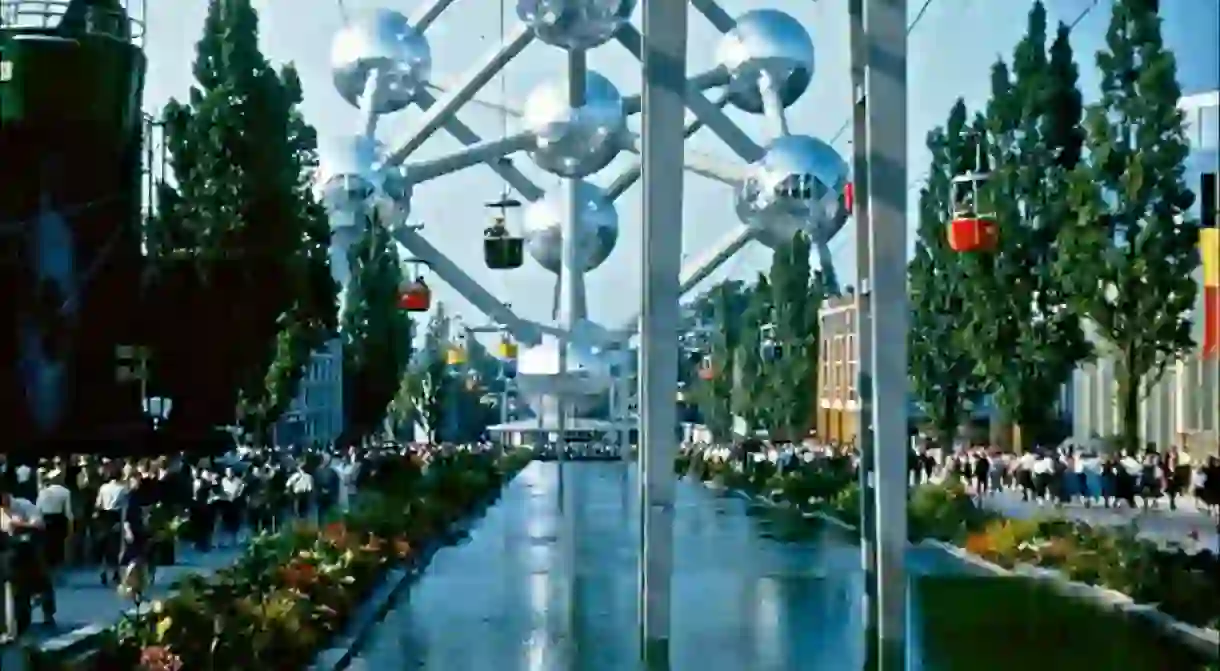Expo 58: A Brief History of Belgium's World Fair Showcase

After the devastation of two World Wars, Europe was ready to set its sight on the future, and Expo 58 was to serve as a tangible representation of that vision. Showcasing the best of technological advancements coupled with cultural expositions, Expo 58 became a significant event for the international community – and for the Belgian nation hosting the event. We take a look back to when Belgium’s Expo 58 presented the world of tomorrow.
The long-standing tradition
Though the World Fair received an official organizational body in 1928, (when the Bureau of International Expositions was established), the concept of a World Fair itself has a long tradition dating back to the mid-19th century. A concept whose origination came from Prince Albert of Saxe-Coburg and Gotha (the husband of Queen Victoria), the ‘Great Exhibition,’ held in 1851, served as one of the first opportunities for the public to observe and appreciate the industrial advancement of societies. The popularity of these fairs gained traction, and they were soon hosted in several nations around the world throughout the late 19th and early 20th centuries.
Reflecting the aspiration of the age, the World Fairs first served as a gateway for the public to discover the advancement in industrial technology, but over time, they transformed into a meeting point for cultural communities to meet and exchange ideas. One of the more intriguing aspects of these events is that some of the greatest landmarks of today were, in fact, built for these international expositions, including the Eiffel Tower in Paris, the Palace of Fine Arts in Chicago and the Magic Fountain of Montjuïc in Barcelona.
The giant Belgian event
Officially deemed what was then known as a ‘Universal Exposition,’ Belgium was selected to serve as host for the 58 World Fair. This would mark Belgium’s 6th time hosting the international event – a monumental one, in fact, as it would be the first one held after WWII. With the devastation of two World Wars, Belgium’s intent to deliver a progressive exposition set the tone for the event, and Expo 58 would be seen as the headlining platform to symbolize peace among participants.
The Expo 58 platforms
The theme of modernization was envisaged through building a model utopia, complete with elaborate pavilions housing the best technological advancements and discoveries at the time. Among the 48 participating countries, each nation planned to deliver a unique agenda to be housed within their futuristic abode.

Pavilions such as Le Corbusier and Iannis Xenakis’ Philips Pavilion attracted attention for its unique architectural design while housing a special multimedia show incorporating lights and sound.
The U.S. pavilion, made up of four stately buildings, hosted cultural delights and activities representing the ‘American way of life,’ such as displaying color television programming and serving popular treats like ice cream and Coca-Cola. While its pavilion neighbor, the Soviet Union, used the occasion as an opportunity to showcase its prowess in scientific advancements, such as displaying its latest space creation Sputnik. The pavilion itself was also grand in the sense that the visitor could walk through a large hallway, only to be greeted by a large statue of Lenin looming overhead. This fascinating arrangement of the two powerhouses was meant to underline the theme of peace and prosperity among nations, yet it undoubtedly also shone a light on the current undertones of the Cold War’s space race.
Beyond milestone advancements in science, Expo 58 also boasted cultural exhibitions, including a collection spotlighting the beginning of modern art and numerous activities and workshops that championed achievements in art and music. These events also attracted the attention of notable cultural and political figures, including Salvador Dalí and various members of royal families.
Though the exhibitions represented the glory days for progressive societies, there was also some drawbacks, namely when it came to expositions such as the Congo Village. Mirroring a similar Congo Village as created by Leopold II for the World Fair in 1897, the tribal backdrop included a space to view individuals from the Congo within a staged community. However, this particular view of Belgium’s colonialism was met with protests, and the exhibition was closed. Two years later, the Congo would become independent.
The icon of Expo 58
Not to be forgotten, Belgium also used the event as an opportunity to display its own modern projects – the most prolific being the Atomium monument. Designed by engineer André Waterkeyn and architects André and Jean Polak, the Atomium totaled more than 2,400 tons and represented a magnetized iron crystal cell. Intending to serve as a symbol for peace among nations even with great strides in atomic energy, the Atomium became a fixture of Expo 58.

Travel back to Expo 58
While many of the legendary pavilions have been broken down or converted to serve other purposes, the Atomium has become an iconic landmark on the Brussels skyline. The structure itself has been spruced up and polished and now serves as a must-see fixture when visiting Belgium. Though it may have been touched up a bit, the Atomium still maintains its roots from Expo 58 by presenting temporary and permanent exhibitions, as well as its own Art & Design Museum.
But for those looking to relive the experience of Expo 58 or imagine the wonder can visit Atomium. From symbol to icon –a permanent exhibition, complete with an archive of photos, videos and models recreating the experience.

Did you know – Culture Trip now does bookable, small-group trips? Pick from authentic, immersive Epic Trips, compact and action-packed Mini Trips and sparkling, expansive Sailing Trips.













